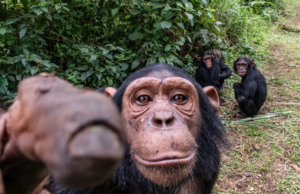ORANGUTANS IN IMMINENT DANGER
bY Fernando Turmo, PGS/ GAP Spain
Four hundred dollars per ton. This is the approximated amount paid for the palm oil, a trade that threats to hit the final stroke to the unavoidable climate change on our Mother Earth.
Millions of square kilometers of tropical forests have disappeared in Borneu in the last few years, as a consequence of this abrasive and contaminating monoculture. The wet forest is normally dissected through an canal that drains water, which is cut, burnt and converted to a palm plantation.
There is no other greasy seed planted in the world that produces the quantity of oil of these ones planted today in
Nevertheless, the name "biofuel" is a label name, with commercial purpose, because in reality these palm plantations devastate violently the environment. First of all, this plant absorbs all the nutrients of the soil, causing it to be extremely poor and in 25 years the soil became completely unfertile. And after thatω That land will only be able to give birth to short bush, the best fuel to cause fire.
Apart from that, the industries which process this oil produce a great quantity of contaminated waste, consisted of fat residuals. As long as it is a monoculture, it is need a great amount of herbicides, fertilizers and pesticides.
The exploitation of palm oil in
Seventy per cent of the forests in
According to studies of
In the following map it can be observed the evolution of the disappearance of the jungles of
It is important to know who is evolved in this savagery. In the beginning it could be thought that the devastation of
Half of the woo that enters
The other half supplies other consumption monsters:
At
This area is protected, but has been being impacted by exploiters and hunters, not to mention the points of fire. Fighting against this mixture of curses to the nature there is a special and heroic woman: Birute Galdikas. She is a primatologist known all over the world for her work and research with orangutans. At
At Pasir Panjung city, near the park, there is an Orangutan Rescue and Quarantine Centre managed by Galdikas herself, through her NGO OFI (Orangutan Foundation International). In this centre there is a team of 3 veterinarians and keepers that take care of the primates. The centre has the instruments and donated medicine needed to the treatments. Every morning the orphan orangutans are taken to the "training forest", an area of the park where they learn to live in freedom. The best is to reintroduce them in the jungle when they are 6 to 8 years old.
Everything seems perfect until you notice the great cabinet used as a record file. It is full of small books and each one represents an orangutan. In the total there are 327 guests in the centre. And to those others will be added soon. The majority are orphans with a few weeks old. There were months that four of them had arrived. The situation is critic and uncontrolled. Even with all the effort, it is impossible to achieve everything that is necessary. The number of orangutans is excessive, the money is not enough and the diary logistic gets more complicated as the time goes by.
According to Galdikas, in the past it was tragic and complicated, at the time of Dictator Suharto. At this time there were not any kind of control and the country had been devastated, including areas of the park. Nowadays it seems that the Government intends to impose order to put an end in the devastation.
Her NGO employs 200 people today, with the objective of protect the park from hunters and wood exploiters and from the burning, and also take care of the orphans. Gadilkas intends to show the Government that the protected park can generate economic feedback and generate funds with tourism, much more than destroying it.
It is worth to mention that Greenpeace has been talking against the giant food and cosmetic multinational UNILEVER, which supports the exploitation of the palms and the oil. The products we have at home are the cause of this tragedy.
When I was writing this article in the plane from

 Español
Español
 Português
Português








